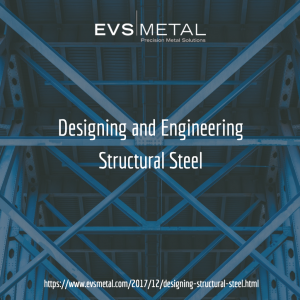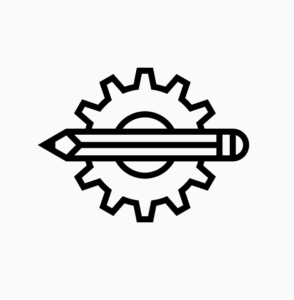Article Revised August 30th, 2022
 Structural steel design is a specialty area within the broader subject of structural engineering. Structural steel designers generally work on large structures such as office buildings, skyscrapers, schools, and bridges. Even some homes require the input of structural steel designers, especially those planned for earthquake- or other natural disaster-prone areas or homes built on mountains or hills where mud or rockslides may be common. Aircraft and large ships are also frequent projects for structural steel engineers.
Structural steel design is a specialty area within the broader subject of structural engineering. Structural steel designers generally work on large structures such as office buildings, skyscrapers, schools, and bridges. Even some homes require the input of structural steel designers, especially those planned for earthquake- or other natural disaster-prone areas or homes built on mountains or hills where mud or rockslides may be common. Aircraft and large ships are also frequent projects for structural steel engineers.
The Importance of Structural Steel Design and Engineering
Why structural steel design and engineering are important is likely obvious; after all, buildings — large ones in particular — designed without considering the underlying structure’s load-bearing requirements would simply fall down. Designers and engineers create the system that supports whatever load has been determined by structural analysis in order to ensure the structure’s overall integrity and therefore, its safe use once built.
There are two commonly-utilized methods of structural steel design currently used: Allowable Strength Design (ASD) and Load and Resistance Factor Design (LRFD). While both ASD and LRFD are considered appropriate for structural steel design, there is one important caveat: once a method is chosen for a project, it is imperative to stay with the original method — switching between philosophies could result in dangerous mistakes or inconsistencies in the structure’s design.
As a metal fabricator, one of the most significant considerations for EVS Metal, after safety, is economy. Utilizing design for manufacturability (DFM) principles during the design and engineering stage is one way to keep costs down, allowing us to pass these savings down to our clients. So while we design for strength first to ensure safety, our next most immediate concern is the economy of design, including manufacturability, serviceability, and constructability.
Fabricating Structural Steel Projects
An important way EVS Metal ensures project success in the design and fabrication of structural steel is by keeping the lines of communication open between different functional areas, including to and from the clients. Understanding what each team needs and taking advantage of practical and institutional knowledge within each department simplifies the entire process from conceptualization to installation. Taking into consideration the suggestions and hands-on expertise of the fabricators, detailers and erectors who will be carrying out the project once it’s out of the design and engineering stage ultimately improves the project and ends up reducing waste both in terms of material and time.
Looking for precision sheet metal fabrication and machining services?

As a fabricator, EVS Metal likes to suggest some “light reading” to our designers and engineers that will help them get a more well-rounded perspective regarding the production of structural steel from start to finish. The American Institute of Steel Construction (AISC) Code of Standard Practice is the first recommendation, as it provides a solid overview of the entire structural steel construction process. The other is the American Society for Testing and Materials (ASTM) A 6, also known as the Standard Specification for General Requirements for Rolled Structural Steel Bars, Plates, Shapes, and Sheet Piling (try saying that three times fast!). While not the most exciting read, the ASTM A 6 gives designers and engineers a chance to better understand the role of steel mill production tolerances in their work, in particular when designing steel frames and their connections.

Quick Structural Steel Design Tips
After more than two decades in the metal fabrication industry, EVS Metal has developed a long (long!) list of recommendations that make our lives easier when it comes to designing and engineering structural steel projects. We’ve broken them down into three categories, as follows:
#1: Don’t Anger the Fabricators:
- Approve shop drawings quickly so the fabricator can efficiently schedule work on the shop floor. This allows the fabricator to schedule the work in the shop most efficiently.
- Fabricators prefer designs that will allow the material to flow continuously through the shop, so they don’t require bolting and welding to the same member.
- This may seem like a no-brainer, but designs should almost always call for materials that are readily available. If materials are not available, it will mean long lead times, which can hold up the project, increasing costs, not to mention everyone’s frustration levels.
- Repeat plate thicknesses and member sizes instead of using a range of dimensions — this will ultimately simplify fabrication and reduce costs.
- Do not specify painting when painting is not absolutely required. The AISC states that painting should be specified only when it is 100% necessary for either corrosion protection or final appearance. If neither of these is an issue, no painting specification is needed.
- Only indicate Architecturally Exposed Structural Steel (AESS) in the design when necessary. When AESS is indicated as required, the design must be fabricated to much stricter standards, adding to the project cost.
#2: Don’t Anger the Welders:
- Ensure there is adequate physical access for welding built into the design. This may seem basic, but you might be surprised how often there isn’t.
- Keep fillet weld sizes at or below 5∕16″. Larger weld sizes generally require multiple passes, additional inspection, and increased project costs.
- Use multi-pass fillet welds instead of groove welds because fillet welds don’t require as much preparation (or as much material at times), which decreases costs overall.
- Weld on only one side of a piece whenever possible.
- Use intermittent instead of continuous fillet welds.
- Answer welders’ questions promptly, as in ASAP. Time is money.
#3: Other Helpful Hints for Structural Steel Design:
- Keep it simple. The simpler the design, the fewer the errors, especially in the field, where mistakes can be even more costly than on the shop floor.
- Provide easily understandable plans for the same reason as above.
- Design and engineering drawings should specify all requirements unique to the project to avoid confusion and save time.
- Minimize changes, as they cost time and money at every level and in every department.
- Use AISC standard details so that everyone is on the same page and “speaking the same language.”
- Minimize work requiring continuous inspection and maximize that which will require intermittent inspection to keep costs down.
- Maximize prefabrication and shop work and minimize fieldwork.
To summarize, structural steel is one of the most versatile building materials available. Whether it’s being used to construct a skyscraper or the military aircraft of the future, it carries with it near-endless possibilities when used correctly by designers and engineers. With a solid foundation and understanding of structural steel, designers and engineers can make almost any structural dream a reality.
Want to learn more about how EVS’s large metal product fabrication capabilities can help with your next project? Get a quote online, or call us at 1-888-9EVSMET.





